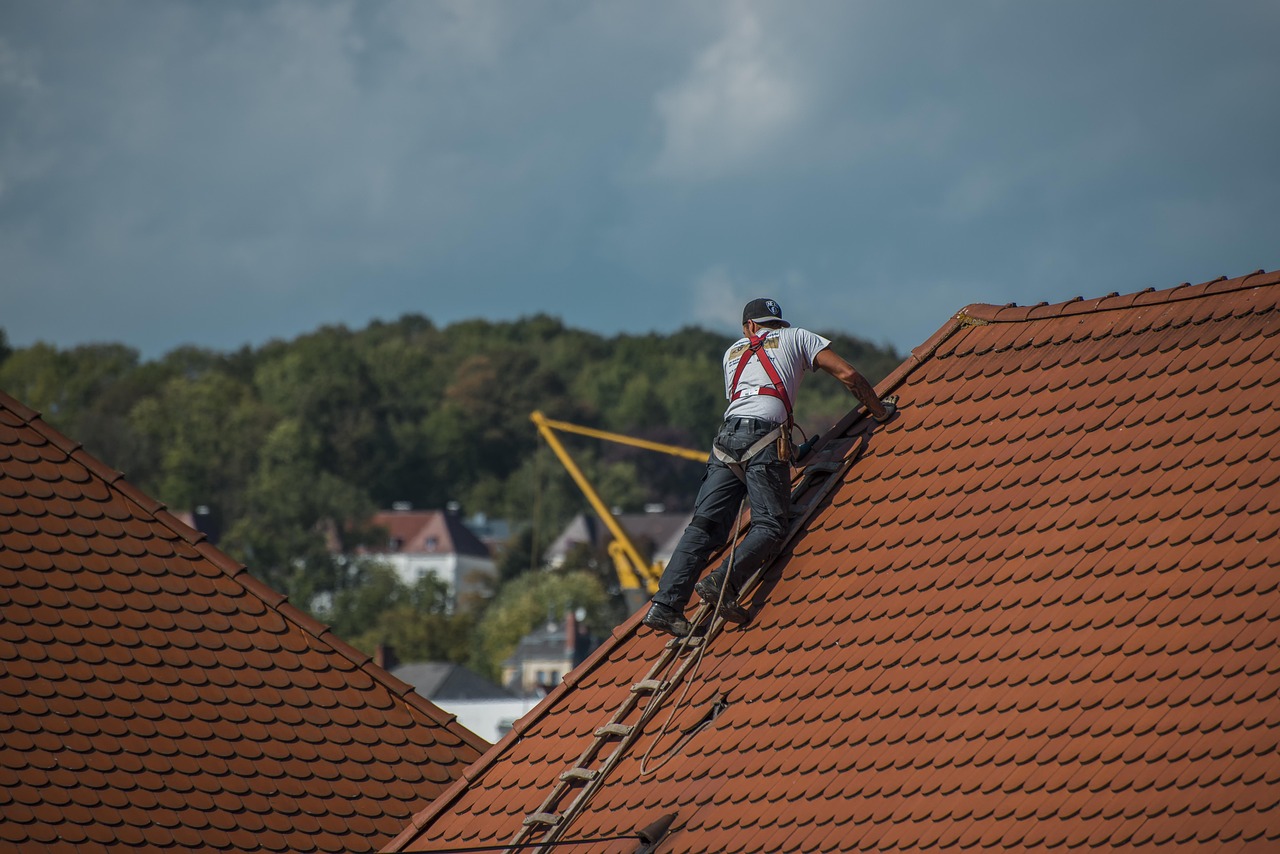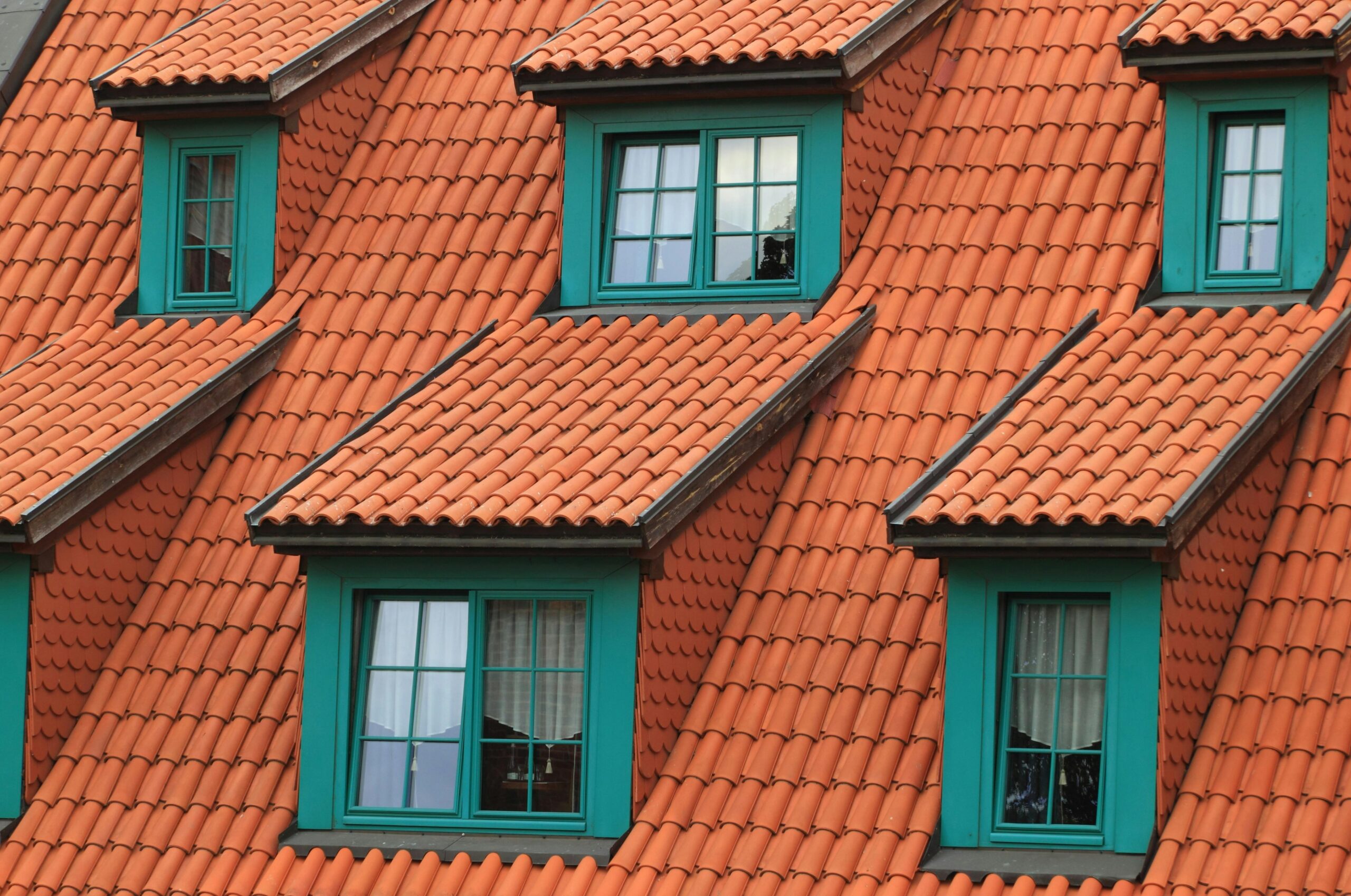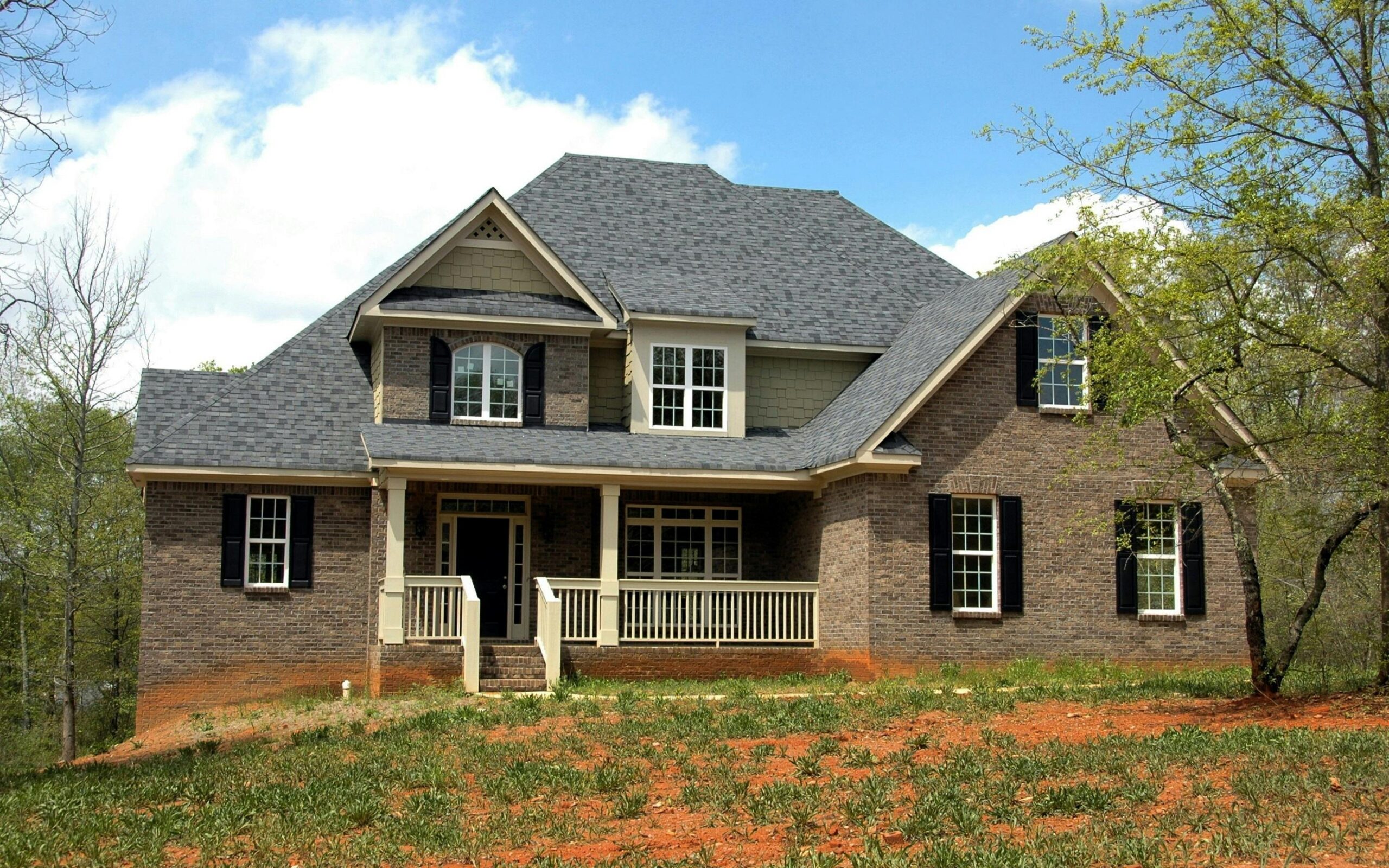New Roof Cost Salt Lake City: Materials, Pricing & Calculator
New roof costs in Salt Lake City range from $12,000–$35,000 for a typical 2,000 sq ft home. Most roofs cost $6–$17 per square foot depending on material choice. A 30-year asphalt shingle roof (most common) costs $12,000–$18,000 installed.
KEY TAKEAWAYS
Q: What’s the average new roof cost in Salt Lake City? New roof costs in Salt Lake City range from $12,000–$35,000 for a typical 2,000 sq ft home, depending on roofing material, complexity, and labor rates. Most roofs cost $6–$17 per square foot.
Q: What’s the difference between shingles, metal, and tile roofing? Asphalt shingles are budget-friendly ($5–$8/sq ft). Metal roofing is mid-range ($10–$15/sq ft) and lasts 40–70 years. Tile is premium ($12–$18/sq ft) and extremely durable. Choice depends on budget, aesthetics, and climate.
Q: How long does a roof replacement take in Salt Lake City? Most roof replacements take 3–7 days depending on roof size, weather, and complexity. Salt Lake City’s autumn and spring weather allows faster completion than winter months. Steep or complex roofs take longer.
Q: What factors increase roof replacement costs? Multiple layers of old roofing (removal costs), roof pitch/steepness, structural damage, local building codes, complex roof design, and seasonal labor demand all increase final costs significantly.
Q: Does Salt Lake City require permits for roof replacement? Yes. Salt Lake City requires roofing permits and inspections for most residential roof replacements. Budget $300–$800 for permits and inspection fees. Your contractor should handle permitting.
Q: How long does a new roof last in Utah’s climate? Asphalt shingles last 15–25 years in Utah. Metal roofing lasts 40–70 years. Tile lasts 50+ years. Utah’s freeze-thaw cycles and intense sun exposure affect lifespan. Quality installation and ventilation are critical.
QUICK ANSWER
New roof costs in Salt Lake City range from $12,000–$35,000 for a typical 2,000 sq ft home. Most roofs cost $6–$17 per square foot depending on material choice. A 30-year asphalt shingle roof (most common) costs $12,000–$18,000 installed.
WHY ROOF REPLACEMENT IS CRITICAL IN SALT LAKE CITY
Utah’s climate is uniquely challenging for roofs. Salt Lake City experiences intense seasonal changes: scorching summers with UV radiation, freezing winters with snow and ice, dramatic freeze-thaw cycles, and occasional high winds and hail. These conditions deteriorate roofing materials faster than milder climates, making roof quality and maintenance critical.
A failing roof leads to leaks, water damage, mold, structural rot, and costly interior damage. A quality roof protects your home’s structural integrity, prevents health hazards, maintains warranty coverage, and preserves resale value. When your roof fails—or shows signs of aging—prompt replacement prevents catastrophic damage.
Signs Your Roof Needs Replacement
Age: Most asphalt shingles last 15–25 years. If your roof is 20+ years old, replacement is overdue.
Missing or Damaged Shingles: More than 5–10% of shingles missing, curled, or granule loss indicates replacement is needed soon.
Leaks or Water Stains: Interior water stains, attic moisture, or visible leaks mean your roof has failed. Replacement is urgent.
Sagging Roof Line: Visible sagging indicates structural damage or inadequate ventilation. This requires immediate professional assessment.
Moss or Algae Growth: Heavy moss or dark streaks indicate moisture retention and shingle degradation (common in shaded areas with humidity).
Granule Loss: Excessive granules in gutters indicate shingle deterioration and near end-of-life.
NEW ROOF COST BREAKDOWN FOR SALT LAKE CITY
Here’s a transparent cost breakdown for a new 2,000 sq ft roof in Salt Lake City:
| Cost Category | Percentage | 2,000 sq ft Roof | Notes |
|---|---|---|---|
| Asphalt Shingles (Material) | 25% | $3,000 | 30-year architectural shingles; most common choice |
| Labor (Installation) | 50% | $6,000 | Largest cost; skilled installation ensures longevity |
| Removal & Disposal (Old Roof) | 10% | $1,200 | Depends on number of existing layers |
| Flashing & Trim | 5% | $600 | New flashing around vents, chimneys, valleys |
| Permit & Inspection | 4% | $500 | City of Salt Lake City requirement |
| Contingency (10%) | 6% | $720 | Budget for unexpected repairs or weather delays |
Total Estimated Cost for 2,000 sq ft Asphalt Roof: $12,020
Cost Per Square Foot: $6.01
ROOFING MATERIAL OPTIONS & SALT LAKE CITY PRICING
Asphalt Shingles (Most Common)
Cost: $5–$8 per square foot installed ($10,000–$16,000 for 2,000 sq ft) Lifespan: 15–25 years in Utah climate Pros:
- Most affordable option
- Widely available and easy to repair
- Decent aesthetic appeal; multiple colors/styles
- Adequate protection in Utah’s climate
Cons:
- Shorter lifespan than metal or tile
- Requires regular maintenance and inspection
- UV rays deteriorate shingles faster in Utah’s intense sun
- Not ideal for high-wind or hail-prone areas
Best For: Homeowners seeking budget-friendly replacement without sacrificing durability. 30-year architectural shingles offer better value than 20-year economy shingles.
Utah Considerations: Utah’s intense sun and freeze-thaw cycles shorten asphalt shingle lifespan. Quality installation with adequate ventilation is essential. In hail-prone areas, consider impact-resistant shingles (+$1–$2/sq ft).
Metal Roofing
Cost: $10–$15 per square foot installed ($20,000–$30,000 for 2,000 sq ft) Lifespan: 40–70 years (warranty: 30–50 years) Pros:
- Extremely durable; lasts 2–3x longer than asphalt
- Reflects solar heat; reduces cooling costs by 10–20%
- Lightweight; less structural stress
- Excellent in heavy snow, wind, and hail
- Recyclable; environmentally friendly
- Low maintenance; resists moss, algae, and rot
Cons:
- Higher upfront cost
- Can be noisier in heavy rain (sound dampening helps)
- Requires specialized installation; fewer contractors
- Can show scratches/dents in certain colors
- May require underlayment upgrades
Best For: Homeowners seeking long-term value, energy savings, and durability. Excellent for Utah’s harsh climate, high-altitude areas, and homes in hail zones.
Utah Advantages: Metal roofing performs exceptionally well in Utah’s freeze-thaw cycles, intense UV exposure, and occasional hail. Many Salt Lake City homeowners recoup metal roof costs through energy savings and longevity.
Popular Metal Options in Salt Lake City:
- Standing Seam (most common, sleek look)
- Metal Shingles (traditional shingle appearance, less noisy)
- Corrugated Metal (industrial look, budget-friendly)
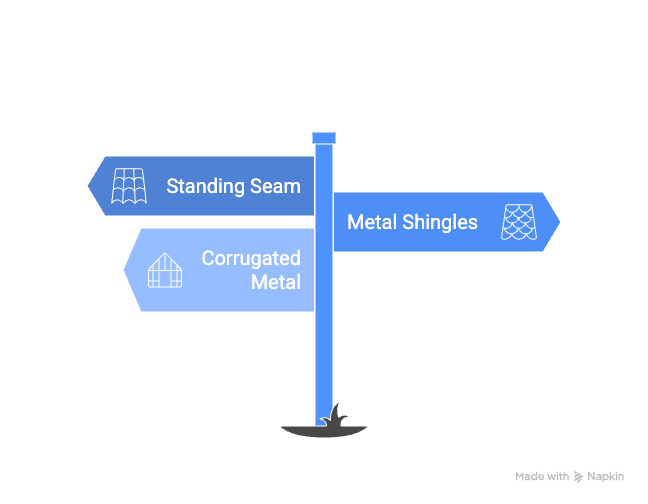
Clay or Concrete Tile
Cost: $12–$18 per square foot installed ($24,000–$36,000 for 2,000 sq ft) Lifespan: 50+ years (some tiles last 100+ years) Pros:
- Extremely durable; longest-lasting residential roofing
- Beautiful, distinctive Mediterranean or Spanish aesthetic
- Excellent insulation; naturally cool in summer
- Fire-resistant; Class A fire rating
- Minimal maintenance; resists rot, insects, and UV
- Can last entire lifetime of home
Cons:
- Highest upfront cost
- Very heavy; may require structural reinforcement
- Tiles can crack in extreme cold or hail
- Requires specialized roofer; limited contractors
- Difficult and expensive to repair individual tiles
- Not ideal for all architectural styles
Best For: High-end homes seeking premium aesthetics, historic properties, and homeowners planning to age in place. Best in areas with lower hail risk.
Utah Considerations: Clay tile performs well in Utah’s climate but is expensive and heavy. Few Salt Lake City homes have tile due to cost and weight. Primarily used in upscale neighborhoods or Spanish/Mediterranean-style homes.
Composite or Synthetic Shingles
Cost: $7–$12 per square foot installed ($14,000–$24,000 for 2,000 sq ft) Lifespan: 25–40 years Pros:
- Lighter than tile; easier installation
- Mimic tile, wood, or slate appearance
- More durable than asphalt shingles
- Better weather resistance
- Mid-range pricing
Cons:
- More expensive than asphalt
- Less proven lifespan than metal or tile
- Limited color/style options
- Not as common; fewer local installers
Best For: Homeowners seeking aesthetic appeal of premium materials without tile weight or metal reflection. Good compromise between cost and durability.
Wood Shake or Slate (Premium/Specialty)
Cost: $10–$20+ per square foot installed Lifespan: Wood shake: 20–40 years; Slate: 75–100+ years Pros:
- Distinctive, premium appearance
- Excellent insulation
- Long lifespan (especially slate)
Cons:
- Expensive materials and specialized installation
- Maintenance-intensive (wood especially)
- Fire concerns (wood shake)
- Few qualified contractors
- Not ideal for Utah’s climate (wood shake)
Best For: Historic homes, high-end properties seeking distinctive character. Slate is more practical for Utah’s climate than wood shake.
SALT LAKE CITY ROOFING COST DRIVERS
High-Cost Factors
Multiple Roof Layers (Tear-Off Cost) Most Salt Lake City homes have 1–2 existing layers of shingles. Removing multiple layers adds $1,000–$3,000 to the project. Older homes sometimes have 3–4 layers (accumulated from decades of re-roofing). Tear-off is labor-intensive but necessary for proper new roof installation.
Roof Pitch & Steepness Steeper roofs (8:12 pitch or higher) require more labor, safety equipment, and time. Steep roofs add 20–30% to labor costs. Very steep roofs may require specialized equipment or roofing systems.
Roof Complexity & Design Complex roof lines with multiple peaks, valleys, dormers, and intersections require more flashing, cuts, and careful installation. Complex roofs cost 15–40% more than simple, rectangular roofs.
Structural Damage or Rot If underlying wood structure shows rot, water damage, or deterioration, replacement is necessary before new roofing. This can add $2,000–$10,000+ depending on extent. Older homes are more susceptible to hidden damage.
Local Building Codes & Permits Salt Lake City has specific building code requirements for roofing. Some neighborhoods have HOA restrictions on roofing materials or colors. Permit costs ($300–$800) and inspection coordination add time and cost.
Hail or Weather Damage Utah’s occasional hail causes widespread roof damage. Insurance may cover replacement, but deductibles apply. Hail damage assessment and emergency repairs add costs.
Chimney, Vent & Flashing Work Multiple penetrations (chimney, plumbing vents, skylights, ridge vents) require careful flashing to prevent leaks. Complex flashing adds $200–$800 per penetration.
Seasonal Labor Demand Spring and summer are peak roofing seasons in Utah. Labor costs are 15–25% higher May–September than October–March. Emergency roofing (winter leaks) commands premium pricing.
Winter or Emergency Roofing Cold weather slows installation, requires heated equipment, and increases labor costs by 20–30%. Emergency roofing (urgent leaks during winter) costs 40–60% more than planned replacement.
Cost-Saving Opportunities
Spring or Fall Construction Scheduling roof replacement in April–May or September–October avoids peak summer demand and winter weather challenges. You’ll get better pricing and faster completion.
Simple, Single-Layer Roof Rectangular roof lines with minimal complexity cost significantly less. Avoiding architectural features and complex designs reduces labor and material costs.
Choose Quality Asphalt Shingles 30-year architectural shingles offer excellent value—durable, affordable, and proven in Utah’s climate. Don’t overspend on premium materials unless aesthetics or longevity justify the cost.
Bundle Roofing with Other Projects Combining roof replacement with gutter replacement, flashing repair, or attic ventilation upgrades can reduce overall labor costs through efficient scheduling.
Local, Established Contractors Small, established roofing contractors in Salt Lake City often charge less than large franchises. They have lower overhead and overhead pass savings to you. Check references carefully.
Maintain Your Roof Proactively Regular inspections, moss/algae removal, and debris cleanup extend roof life by 3–5 years. Spending $300–$500 annually on maintenance can delay replacement by years, saving thousands.
ROOFING PERMITS & INSPECTIONS IN SALT LAKE CITY
Required Permits
The City and County of Salt Lake City Building Department requires roofing permits for most residential roof replacements:
Building Permit (Roofing): Required for all roof replacements
- Application: $150–$300
- Plan review: Minimal for simple roofing
- Includes initial inspection before work and final inspection after completion
Structural Permit (if needed): Required only if roof replacement reveals structural damage or if roof structure modifications are needed
- Application: $200–$500
- Additional engineering may be required
HOA Approval (if applicable): Many Salt Lake City neighborhoods have HOAs that restrict roofing materials or colors
- Approval timeline: 2–4 weeks
- May require roofing samples or color approval
Total Permit Costs: $300–$800
Required Inspections
Pre-Work Inspection: The city may require an inspection of the existing roof condition before tear-off begins (verifies damage assessment).
Mid-Project Inspection: After old roof removal but before new underlayment installation, to verify structural integrity.
Final Inspection: After new roof completion, to verify code compliance, proper installation, and flashing integrity.
Timeline: Inspections typically occur within 2–5 business days of request. Your contractor schedules and coordinates inspections.
STEP-BY-STEP ROOF REPLACEMENT PROCESS IN SALT LAKE CITY
Step 1: Roof Inspection & Assessment A qualified roofing contractor inspects your roof for damage, age, and remaining lifespan. They provide a detailed assessment with photographs and recommendations. Most inspections are free if you’re considering replacement.
Step 2: Get Multiple Quotes Contact 3–5 licensed, insured roofers in Salt Lake City. Request detailed written estimates including material type, labor, removal costs, permits, and timeline. Compare apples-to-apples (same materials, scope).
Step 3: Choose Your Roofing Material Decide between asphalt shingles, metal, tile, or composite based on budget, aesthetics, and durability. Ask your contractor about material performance in Utah’s climate and local building code requirements.
Step 4: Obtain Permits & Schedule Work Your contractor submits roofing permit applications to the City and County Building Department. Permit approval typically takes 3–7 business days. Work is scheduled once permits are approved and weather permits.
Step 5: Prepare for Roof Removal The contractor marks off the work area, sets up dumpsters, and protects landscaping and hardscape. They notify neighbors of upcoming work. Expect noise, debris, and crew activity for 1–2 days during tear-off.
Step 6: Remove Old Roofing The old roof is carefully removed and disposed of (environmental recycling or landfill). The contractor checks the underlying structure for damage, rot, or deterioration. Any structural issues are assessed and quoted separately.
Step 7: Repair Structural Issues (if Needed) If rot, water damage, or deterioration is discovered, it’s repaired before new roofing installation. This prevents future leaks and ensures proper new roof foundation.
Step 8: Install New Underlayment & Ventilation Modern underlayment (synthetic or felt) provides secondary weather protection. Ridge vents, soffit vents, and attic ventilation are installed or upgraded to prevent moisture buildup and extend roof life.
Step 9: Install New Roofing Material New shingles, metal panels, or tiles are installed according to manufacturer specifications. Proper nailing, overlapping, and fastening are critical. Quality installation ensures roof longevity and warranty validity.
Step 10: Install Flashing & Trim New flashing is installed around chimneys, vents, skylights, and roof valleys. Trim and edge details are finished. Flashing prevents leaks at vulnerable penetration points.
Step 11: Install Gutters & Downspouts (if Needed) New gutters and downspouts may be installed if old gutters are damaged or inadequate. Proper gutter function prevents water damage to siding, foundation, and landscaping.
Step 12: Final Cleanup & Inspection All debris is removed. The site is cleaned. A final city inspection verifies code compliance and proper installation. The contractor provides warranties and maintenance instructions.
Total Timeline: 3–7 days for active installation (depending on roof size, complexity, and weather). Permit approval and scheduling add 1–3 weeks before work begins.
HOW LONG ROOF REPLACEMENT TAKES IN SALT LAKE CITY
Typical Timeline:
| Phase | Duration | Details |
|---|---|---|
| Inspection & Quote | 1–3 days | Contractor assesses roof and provides estimate |
| Permit Application | 3–7 days | City review and approval of roofing permit |
| Scheduling & Planning | 3–14 days | Coordinate timing, order materials, final planning |
| Weather Window | Variable | Depends on season and forecast |
| Tear-Off & Prep | 1–2 days | Remove old roofing; inspect structure |
| New Installation | 2–5 days | Install underlayment, roofing, flashing |
| Cleanup & Inspection | 1 day | Remove debris; final city inspection |
| Total: 14–30 days from inquiry to completion | Permit & weather determine actual timeline |
Spring/Summer (May–September): Faster completion due to favorable weather and contractor availability. Typically 2–4 weeks from permit to finish.
Fall (September–November): Good window; moderate pricing and decent weather. 2–4 weeks typical.
Winter (December–March): Slower due to snow, ice, and cold. Roofing is possible but weather delays are common. 3–6 weeks typical. Emergency roofing (leak repair) is urgent and costly.
WHY ROOF QUALITY & INSTALLATION MATTER
A roof is only as good as its installation. Premium materials installed poorly will fail prematurely. Conversely, quality installation of mid-range materials ensures decades of protection.
Critical Installation Factors
Proper Ventilation Inadequate attic ventilation traps moisture, leading to wood rot, mold, and premature shingle failure. Modern roofing requires ridge vents, soffit vents, and proper airflow. This extends roof life by 5–10 years.
Correct Fastening & Overlapping Shingles must be fastened with proper nail placement and quantity. Incorrect fastening causes wind damage and premature wear. Proper overlapping ensures water flows downward without penetration.
Flashing Integration Chimneys, vents, and valleys are leak-prone if flashing is improper. Quality flashing prevents costly water damage. This is where most roof leaks originate—at penetration points, not the main roof area.
Underlayment Installation Quality underlayment provides secondary weather protection and extends roof life. Modern synthetic underlayment is superior to traditional felt and resists moisture better.
Edge & Trim Details Proper edge installation, drip edges, and trim prevent water infiltration at roof edges. Sloppy edge work leads to fascia rot and water damage.
ROOFING LIFESPAN IN UTAH’S CLIMATE
Utah’s unique climate significantly impacts roofing lifespan:
Climate Factors Affecting Roofs
Intense UV Radiation Utah’s high altitude (Salt Lake City: 4,226 ft) and clear skies expose roofing materials to intense UV rays. This accelerates shingle degradation, fading, and brittleness. UV-protective coatings and quality materials help mitigate this.
Freeze-Thaw Cycles Winter temperatures drop below freezing nightly, then rise during sunny days. This freeze-thaw cycle stresses roofing materials, causing expansion/contraction, cracking, and premature aging. Metal and tile handle this better than asphalt.
Winter Snow & Ice Heavy winter snowfall and ice dams stress roofing. Snow load, ice dam formation, and snow removal damage shingles if not managed properly. Proper ventilation prevents ice dams.
Low Humidity & Drought Utah’s dry climate limits moisture-related rot and mold but accelerates shingle brittleness. Asphalt shingles dry out faster in low-humidity environments, shortening lifespan.
Occasional Hail & High Winds Summer hail storms and wind events damage roofing, especially asphalt shingles. Metal and impact-resistant shingles handle hail better than standard asphalt.
Realistic Lifespans in Utah
Asphalt Shingles (30-year): 15–22 years in Salt Lake City climate (vs. 25+ years in moderate climates)
Metal Roofing: 40–60 years (performs very well in Utah’s climate; freeze-thaw actually has minimal impact on modern metal roofs)
Clay/Concrete Tile: 50+ years (extremely durable; freeze-thaw has minimal impact)
Composite Shingles: 25–35 years (better than asphalt; mid-range lifespan)
Pro Tip: Invest in quality installation and maintenance. Extending roof life by 3–5 years through proper care saves thousands in premature replacement.
ROOFING MAINTENANCE & CARE IN SALT LAKE CITY
Regular maintenance extends your roof’s lifespan by 3–5 years:
Annual Maintenance Tasks
Spring Inspection (After Winter)
- Check for winter damage, ice dam damage, or missing shingles
- Clear gutters of debris
- Trim tree branches hanging over roof
- Inspect for moss or algae growth in shaded areas
Fall Preparation (Before Winter)
- Clean gutters and downspouts thoroughly
- Remove debris from roof surface
- Inspect for loose or damaged shingles
- Ensure proper attic ventilation
Summer Maintenance
- Check for UV damage or shingle fading
- Inspect flashing around vents and chimneys
- Ensure gutters direct water away from foundation
- Trim back vegetation to prevent shading and moisture
Winter Considerations
- Monitor for ice dams on roof edges
- Clear roof of heavy snow accumulation (if safe)
- Watch for leaks inside attic during heavy snow
- Avoid walking on snowy/icy roofs (fall hazard)
Cost-Effective Maintenance
Moss & Algae Removal: $200–$500 annually Prevents moisture retention and shingle degradation. Power washing or zinc-coated strips are effective.
Gutter Cleaning: $100–$300 annually Clean gutters prevent water backup, ice dams, and foundation damage. DIY or hire a professional.
Flashing Inspection & Sealing: $150–$400 annually Inspect flashing around penetrations and reseal if necessary. Prevents small leaks from becoming major water damage.
Tree Trimming: $200–$800 per tree Remove branches hanging over roof to prevent debris accumulation, reduce shading (which promotes moss), and prevent storm damage.
Attic Ventilation Check: $100–$300 Ensure vents are unobstructed and attic has proper airflow. Poor ventilation reduces roof life significantly.
CHOOSING A TRUSTED ROOFING CONTRACTOR IN SALT LAKE CITY
What to Look For
Licensing & Insurance
- Verify contractor holds current Utah roofing license
- Confirm commercial general liability insurance ($1M+)
- Confirm workers’ compensation insurance
- Ask for proof of licenses and insurance certificates
Experience & Specialization
- Ask about experience with your roofing material choice
- Request references from similar projects
- Ask about warranty offerings and guarantees
- Inquire about manufacturer certifications (GAF, CertainTeed, etc.)
Local Reputation
- Check online reviews (Google, Yelp, BBB)
- Ask neighbors about their roofing experiences
- Look for “Best of Salt Lake City” recognition
- Verify longevity in local market
Transparent Pricing
- Get written estimates breaking down materials, labor, permits
- Ensure estimates include removal, disposal, and cleanup
- Clarify what’s included/excluded
- Confirm warranty coverage in writing
Communication & Professionalism
- Contractor is responsive and professional
- Explains options clearly without high-pressure sales
- Provides honest timeline and realistic expectations
- Willing to answer all questions thoroughly
Red Flags to Avoid







GENERAL CONTRACTORS SALT LAKE’S ROOFING PARTNERS
We partner exclusively with licensed, insured roofing contractors throughout Salt Lake City who share our values:
✓ Quality Craftsmanship: Roofing done right, the first time—by experienced professionals who take pride in their work.
✓ Transparency & Honesty: Fair pricing, clear communication, detailed written estimates, no surprises or hidden fees.
✓ Reliability: Contractors who show up on time, complete projects on schedule, and stand behind their work with warranties.
✓ Local Expertise: Deep knowledge of Salt Lake City building codes, local climate challenges, and neighborhood character.
✓ Customer Care: Professional, respectful communication and a commitment to your satisfaction.
Our roofing partners are carefully vetted on licensing, insurance, references, and customer satisfaction. We vet each contractor personally to ensure you receive quality work at fair prices.
FREQUENTLY ASKED QUESTIONS ABOUT ROOF REPLACEMENT IN SALT LAKE CITY
Q: Does my homeowners insurance cover roof replacement? Insurance may cover damage from storms (hail, wind, snow) or sudden events. It typically doesn’t cover normal aging. File a claim if your roof is damaged, but expect a deductible ($500–$2,500 typical). Check your policy for specific coverage details.
Q: Can I install a new roof over my existing roof? Overlay (new roof over old) is sometimes permitted but not recommended. It hides underlying damage, adds weight stress, voids some warranties, and complicates future removal. Salt Lake City Building Code typically limits overlays to one layer. Full tear-off and replacement is the professional standard and ensures roof longevity.
Q: What’s included in a roofing warranty? Most roofing warranties cover material defects (10–50 years depending on material) and workmanship (1–10 years). Warranties typically cover defects like premature shingle failure, improper installation, and manufacturing flaws. Exclusions usually include weather damage, ice dams, and improper maintenance. Get the warranty in writing and keep documentation.
Q: How do I prevent ice dams on my roof? Ice dams form when warm attic air melts snow, and meltwater refreezes at cold roof edges. Prevention includes: proper attic insulation (R-38 to R-60 minimum), adequate ventilation, sealing air leaks, and ensuring gutters are clear. In severe cases, heated cables or ridge vents help. Your contractor can assess your ventilation adequacy.
Q: Is it safe to walk on my roof to clean gutters or remove snow? Roof work is dangerous. Falls cause serious injury. Use professional services for gutter cleaning, moss removal, and roof inspection. Only use ladders if you’re experienced and take safety precautions. For most homeowners, hiring a professional is worth the cost and safety benefit.
Q: Will roof replacement increase my property taxes? No. Most property tax systems don’t reassess values for roof replacement alone (it’s maintenance, not a structural improvement). However, if you add square footage (addition with new roof), taxes may increase. Consult your local assessor for specifics.
Q: How do I maintain my gutters to protect my roof? Clean gutters 2–3 times yearly (spring after debris, fall before snow, summer if heavy debris). Clogged gutters cause water backup, ice dams, and fascia damage. Gutter guards reduce maintenance but don’t eliminate it. Professional gutter cleaning is $150–$400 annually.
Q: What’s the difference between architectural and 3-tab shingles? 3-tab shingles are the budget option, basic appearance, 20-year lifespan typical. Architectural (dimensional) shingles are premium 30-year shingles with layered appearance, better durability, and aesthetic appeal. Architectural shingles cost 15–25% more but last significantly longer and look better.
Q: Can I get a roofing credit or rebate? Some energy-efficient metal roofs qualify for federal or state tax credits. Check current IRS guidelines and Utah State Energy Office for available incentives. Metal roofing’s reflectivity and energy efficiency may qualify. Discuss with your contractor.
Q: How often should I have my roof inspected? Annual inspections are ideal, especially after winter or storms. Most homeowners inspect after major weather events. If you notice leaks, missing shingles, or age (15+ years), get a professional inspection immediately. Early detection prevents costly water damage.
Q: What should I do if I notice a roof leak? Call a roofing contractor immediately. Small leaks become major water damage quickly. Temporary measures: place buckets under leaks, check attic for water damage, document damage with photos for insurance. Professional inspection and repair are essential to prevent mold and structural damage.
READY FOR YOUR NEW ROOF?
Get connected with a trusted, licensed contractor in Salt Lake City who shares our values of quality, honesty, and personal service.
